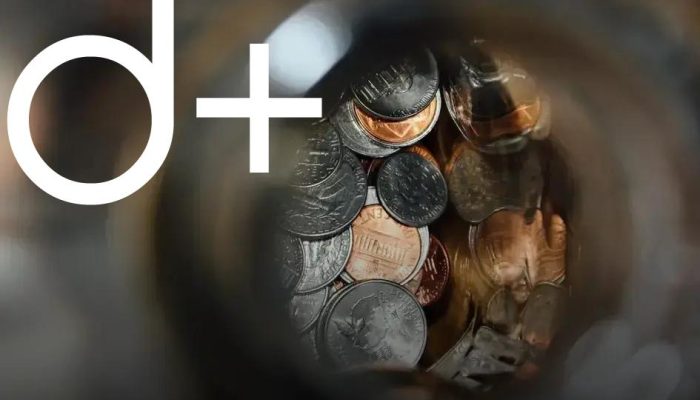Investing in cryptocurrency is exciting but comes with risks. Learning how to protect your crypto investments from hacks is crucial. By understanding common threats, using strong password practices, and choosing secure wallets, you can safeguard your digital assets. Our guide will walk you through essential security measures.
Understand Common Crypto Threats
One of the primary steps to safeguarding your crypto investments involves gaining a comprehensive understanding of the common threats in the crypto space. There are several prevalent dangers that investors should be aware of.
Phishing Attacks
Phishing scams are one of the most frequently used methods by attackers. They often involve tricking users into revealing private keys or login information through deceptive emails or websites that mimic legitimate exchanges or services. Always double-check URLs and never click on suspicious links.
Malware and Trojan
Some malicious software is designed specifically to target crypto wallets and exchanges. Installing a reliable antivirus and constantly updating your software is crucial in protecting against these types of threats.
Exchange Vulnerabilities
Crypto exchanges can sometimes become targets for hackers looking to steal funds from multiple users at once. Ensure that the exchange you use has a strong track record of security and employs robust protective measures. By familiarizing yourself with these threats, you lay the groundwork for a safer investment environment.
Utilize Strong Passwords and 2FA

One of the most effective ways to secure your crypto investments is by using strong passwords and enabling Two-Factor Authentication (2FA). A strong password should be a mix of letters, numbers, and special characters. Avoid using easily guessable information like birthdays or common words.
Consider using a password manager to generate and store unique passwords for each of your accounts. This not only increases your security but also simplifies the process of managing multiple passwords.
Enabling 2FA adds an additional layer of protection. With 2FA, even if someone gets hold of your password, they won’t be able to access your account without a second form of verification. This might include a code sent via SMS or generated by an authentication app.
Ensure you use 2FA that isn’t solely reliant on SMS, as SMS can be vulnerable to interception. Physical security keys or authenticator apps such as Google Authenticator are recommended for higher security.
Regularly update and change your passwords, and review the 2FA settings on all your crypto platforms to ensure maximum protection against unauthorized access. Taking these steps significantly decreases the risk of hacking and unauthorized access to your crypto assets.
Choose Secure Wallets Wisely
When it comes to safeguarding your crypto investments, choosing a secure wallet is crucial. With a multitude of wallet options available, it’s essential to understand the differences and security features of these wallets. A crypto wallet can be a software application or a physical device.
Software Wallets:
These are typically more convenient and accessible. However, they may be vulnerable to cyber threats if not properly secured. Always, ensure that the wallet you choose has robust security features such as biometric authentication or a strong password protection system.
Hardware Wallets:
Unlike software wallets, hardware wallets are physical devices that store your private keys offline, making them impervious to online hacks. Opting for a well-reputed hardware wallet can greatly enhance the security of your funds. Ensure that the device is genuine and purchased from an official provider to avoid counterfeit products. Furthermore, look for wallets that support two-factor authentication and regular software updates. Consider wallets that allow you to manage multiple currencies if you have a diverse crypto portfolio. It’s also important to remember to back up your wallet and secure your recovery phrase in a safe location. Failure to back up can result in losing access to your funds permanently. Additionally, some wallets provide insurance against theft; however, this is rare, and you should read the terms thoroughly before relying on this feature. By choosing a secure wallet wisely, you are taking a significant step in protecting your digital assets from potential hacks and theft.
Stay Informed About Latest Security Trends

In an ever-evolving digital landscape, keeping updated with the latest security trends is imperative for safeguarding your crypto investments. Understanding these trends allows you to anticipate potential threats and adapt your security measures effectively.
One of the key aspects to watch is the rise of phishing attacks targeting crypto users. Cybercriminals often employ sophisticated tactics that mimic legitimate sources, tricking individuals into revealing sensitive information. Stay vigilant and double-check URLs and email addresses before clicking on any links.
Another trend that requires attention is the exploitation of smart contracts. As these self-executing contracts gain popularity, hackers are finding ways to exploit vulnerabilities within them. Engaging with experienced developers and conducting thorough code audits can mitigate these risks.
The growth of decentralized finance (DeFi) platforms also brings new security challenges. These platforms can be an enticing target for cybercriminals due to the substantial amounts held within. Be aware of decentralized protocols and any potential vulnerabilities they might possess.
Cryptographic innovations continuously emerge, and staying informed about these developments can provide an extra layer of security. Technologies such as quantum-resistant encryption might shape the future of crypto security, so keeping an eye on these advancements is beneficial.
Participation in forums and online communities can keep you informed. Security experts often share major developments and insights on platforms like Reddit or Twitter.
Attending webinars or workshops held by cybersecurity professionals can equip you with the latest knowledge and strategies to thwart emerging threats effectively.
Implement Regular Backups and Updates
In the fast-paced world of cryptocurrency, ensuring the security of your investments is paramount. One crucial step in doing so is to implement regular backups and updates. By scheduling routine backups of your digital wallets, you minimize potential losses if a device holding your crypto assets is lost, stolen, or compromised. Consider using both cloud solutions and physical storage, such as external hard drives, to diversify your backup strategy.
Equally important is the practice of keeping your software and devices updated. Software updates often include patches for known vulnerabilities that could leave your crypto assets exposed to attacks. Ensure your computer, mobile devices, and any crypto applications are running the latest versions. Enable automatic updates when available to make this process seamless.
For wallet software and exchanges, keeping up with updates is particularly vital as these platforms continuously enhance their security protocols. If your wallet provider offers new security features, take advantage of them promptly. An outdated system or application can be an easy target for hackers.
Implementing these measures not only helps protect your investments but also contributes to the broader security of the entire crypto ecosystem. By making backups habitual and staying on top of updates, you address two of the most straightforward yet effective methods for securing your digital assets.







![BANNER 1 - HOME [QUADRADO]](https://dailyfindinvestment.com/wp-content/uploads/2025/01/BANNER-300-X-300.gif)
